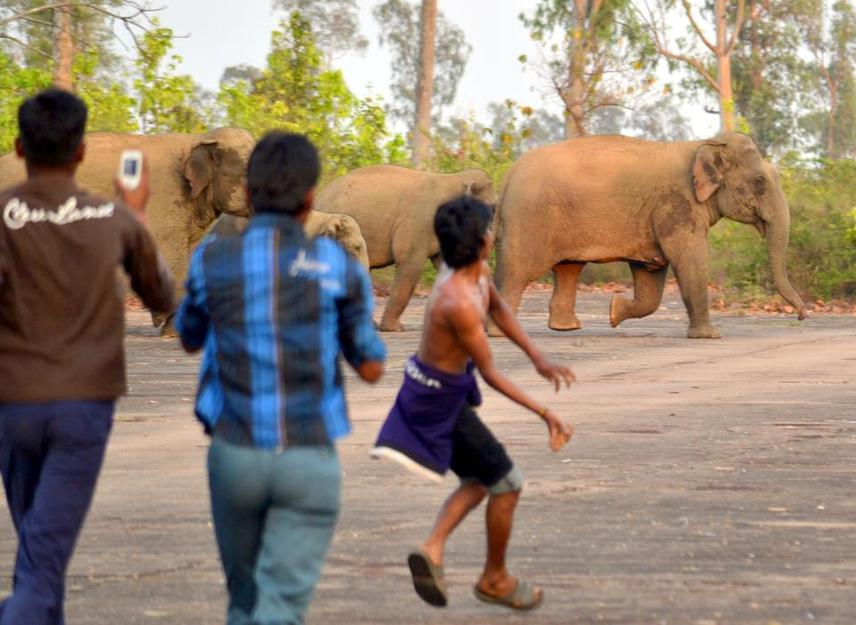Social media video featuring the project.
Right of Passage
22 Aug 2017 Mayurjharna Elephant Reserve, India, Indian Sub-continent Conflict | Elephants | Mammals
Ecological Restoration of Elephant Corridors and Community Awareness to Reduce Human-Elephant Conflict around Mayurjharna Elephant Reserve, West Bengal, India
Elephant Habitat Restoration Programme and Human-Elephant Conflict Mitigation in Mayurjharna Elephant Reserve, West Bengal, India
Community Capacity Building & Conservation Education to Mitigate Man-Elephant Conflict & Conservation of Eastern India Elephant Population in West Bengal, India
Living with Harmony – A Community Based Initiative to Develop a Comprehensive Management Plan to Mitigate Human-Elephant Interaction, Southern West Bengal, India
Southern West Bengal is part of home range of Eastern India population of Endangered Asian Elephant and Mayurjharna Elephant Reserve is only elephant reserve in West Bengal for the population. The proposed project intend to do enumeration of elephant population and develop an ‘Elephant Population Distribution Map’ and review the existing ‘Conflict’ intensity map to continue the species conservation and corridor forest restoration programme. We will do stakeholders’ attitudinal survey, village volunteer’s orientation & capacity building programme to mitigate human-elephant hostility. We intend to implement new ideas like alternate livelihood, crop alteration, save period of cultivation, unpalatable long-awned (bristles) paddy, chilly etc. through training and field verification. An Anti-depredation Squad will be formed in high intensity HEI zone to reduce the ‘conflict’. The findings and outcomes with recommendations in a form of report will be circulated to concerned authorities and shared in project website.

The Endangered Asian Elephants are designated as ‘National Heritage Animal’ of India. Southern West Bengal (henceforth SWB) along with Mayurjharna Elephant Reserve is the only elephant reserve for Eastern India elephant population. The elephant population in Southern West Bengal is expanding its home range beyond ‘Mayurjharna Elephant Reserve’ (414.06sq.km.) and the declared ‘Zone of influence’ (1436sq.km). In last 5 years elephant population here increased by 61% (i.e. 118+ in 2012 to 190+ in 2016-17) and extended their home range in human dominated landscape. These elephants are subdivided into 120+ migratory, 40+ residential and 30+ Mayurjharna elephants with several subgroups. The population is expanding their home range in 10 forest divisions and in last 5 years killed 163 people, injured 217+, and damaged 8053 huts, and 20,000+ hectares of crops and on the other side the 50+ elephants died (including natural and accidental incidents).
These elephants are facing high level of conflict in human-dominated landscape. It is very much essential to restore the degraded habitat and community participation to secure the existing corridors as safe passage. This project will work to restore degraded elephant corridors in human dominated landscapes and develop opportunities for villagers through alternate livelihood development to minimise corridor forest resource dependency. The restored habitats can support a viable population of migratory elephants and secure their safe passage through these green corridors. The interactive and in-depth community awareness, sensitization and capacity building programme to reduce the intensity of conflicts will help to change the attitude of people and reduce the probability of retaliatory killing / harming to the elephants.
The most vital part of the project is yearlong Conservation Education and Community Capacity Building programme as only this can reduce Human-Elephant Interaction. We hope the project will help to bring the change in community attitude and also they will adopt the suggested HEC mitigation measure gradually. We hope that ‘Elephant Distribution Map’ and ‘Conflict Intensity Zone Map’ will help forest managers and policy makers to develop need based management plan. The updated database will help to develop migration calendar to develop agricultural planning to minimize crop raiding impact. The project will develop local level conservationist to continue the human-elephant interaction mitigation in the project area. The project findings with recommendations in a form of project report will be circulated to concerned authorities with recommendation and collaborative implementation.
Social media video featuring the project.
Right of Passage